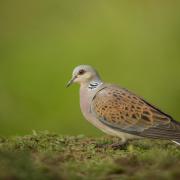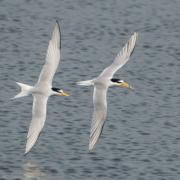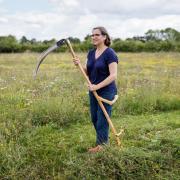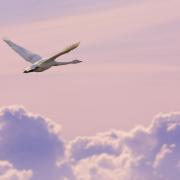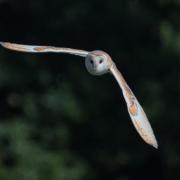A rural oasis close to the heart of Ipswich, Orwell Country Park is perhaps not as well known as it deserves to be, says Cathy Brown
A rural oasis close to the heart of Ipswich, Orwell Country Park is perhaps not as well known as it deserves to be, says Cathy Brown
Even if you’ve never heard of it, you’ve probably seen it, for part of it lies under the piers of the Orwell Bridge, on the eastern side of the estuary. A “green belt” between the river and the Ravenswood development, the old Ipswich Airport site, the park stretches on both sides of the A14. Walking there, the background noise of traffic crossing the bridge and heading to and from Felixstowe can be hard to escape altogether, but the park’s many attractions more than outweigh this minor drawback.It is amazing how quickly you forget all about the road, stepping into a landscape seemingly untouched by time. Another minor intrusion, the power lines which currently cross the park, will be replaced by underground cables later this year (2010). The country park combines a stunning range of landscape types and wildlife habitats, from ancient woodland via scrub and heathland to marshland and muddy foreshore, with spectacular views across the Orwell estuary.Some of the park falls within the Suffolk Coasts and Heaths Area of Outstanding Natural Beauty and it also includes Sites of Special Scientific Interest and County Wildlife Sites.Orwell Country Park was officially opened to the public in 1995, but its history as a recreational area goes back much further. Pipers Vale, the part north of the bridge, was enjoyed by the people of Ipswich for centuries before it was bought by the borough council in 1926. This area is a valuable remnant of the coastal heath that once stretched from Ipswich to Lowestoft. Bridge Wood, to the south of the bridge, is designated an ancient woodland, which means it has been managed continuously as woodland since 1600 (at least). It contains a number of magnificent old oak trees, many hundreds of years old. It also contains some 1950s pine plantation, which is gradually being thinned to create more traditional mixed woodland.Park ranger Richard Sharp explains that before the creation of the Country Park, both Pipers Vale and Bridge Wood were “really mistreated.” The wood was full of burnt out cars and illegal campsites. The car wrecks were cleared by military helicopters and by 1996 both Pipers Vale and Bridge Wood were declared local nature reserves and county wildlife sites.The park also includes Pond Hall Farm, owned by the borough and farmed under tenancy; Pond Hall Carr, which has been transferred from the farm to the park; Braziers Wood and Elm Hill, an area which was allotments until the 1980s, but now provides habitat for lizards, slowworms, nightingales, and much more besides.The name of Pond Hall Farm is believed to come from the Latin pons, meaning bridge or crossing point, and Bridge Wood too is thought to take its name from the ancient crossing point (still discernible at low water), a path of shale and stone which once allowed people to cross the river at low tide, rather than the much more recent Orwell Bridge.Braziers Wood occupies the small valley of a spring-fed brook. Again, a relatively small area crams in a variety of habitats, from mature oak and silver birch trees on the steeper slopes to wet marsh and alder carr in the valley bottom – supporting an equally wide range of wildlife and wildflowers.And of course the mudflats of the Orwell estuary attract an internationally important population of wildfowl and wading birds.The park had an area of 200 acres (80 hectares) when it opened in 1995 but gained another 50 acres from the old airport when the Ravenswood housing development was created, and now stretches to 100 hectares.Ranger Richard explains that there are ambitious plans to develop the park further, with plans for an environmentally-friendly visitor centre, improvements to pathways, and management to encourage more wildlife.Thanks to grants and sponsorship, new maps and information points, as well as a composting toilet and new waymarking for the walking routes through the park will be in place by the spring, he said.A lot of the practical work in the park is done by volunteers, and it is hoped to set up a Friends of Orwell Country Park group to help with everything from tree felling to administration.The park is managed with three main aims: nature conservation, promoting recreational use and providing an educational resource.Richard says that vandalism can be a problem, with the park so close to residential areas, and he feels frustrated when, for example, newly-erected fencing, intended to protect vulnerable habitats, is ripped up and used as firewood for beach bonfires.But he believes passionately that working with local primary schools and even younger children, getting them involved in projects like tree planting and putting up bird and bat boxes, will help to give young people a sense of ownership of the park and its flora and fauna, which will encourage them to appreciate their environment and treat it with more respect in future.And above all he wants people to visit the park and enjoy its wealth of wildlife and wildflowers. So, for example, he is working with the Suffolk Orienteering Club to improve the orienteering course that already exists in Bridge Wood and extend it to go all round the park.Next time you are crossing the Orwell Bridge, take a look at the park under the piers. Better still, stop and go exploring Once you have been there, you’ll want to return!
Getting there There are two car parks, with information points, one at Pipers Vale (follow Sandy Hills Lane from Landseer Road) and one at Bridge Wood (follow the old airfield perimeter track from the Nacton Road.) The No 1 bus from Tower Ramparts stops at the Pipers Vale Car Park. In addition to the two main entrances there is footpath access to the park from Braziers Wood Road, Platters Close and Morland Road. For more information visit www.ipswich.gov.uk 2009 wildlife highlightsPeregrine falcons nested successfully under the Orwell Bridge. The peregrine falcons, which raised chicks in the nesting box for the first time in 2008, are the first to nest in Suffolk for over 200 years. See also Suffolk landmarks page 63. Buzzards have been spotted regularly flying over the park.An unusually large number of nightingales was heard singing during the spring. The old airport site also boasts the biggest population of skylarks in the borough. There were greater numbers of southern marsh orchids, early purple orchids and bee orchids than in previous years in the woodland areas. Bat boxes were put up in 2008 and pipistrelle bats have already taken up residence.

















